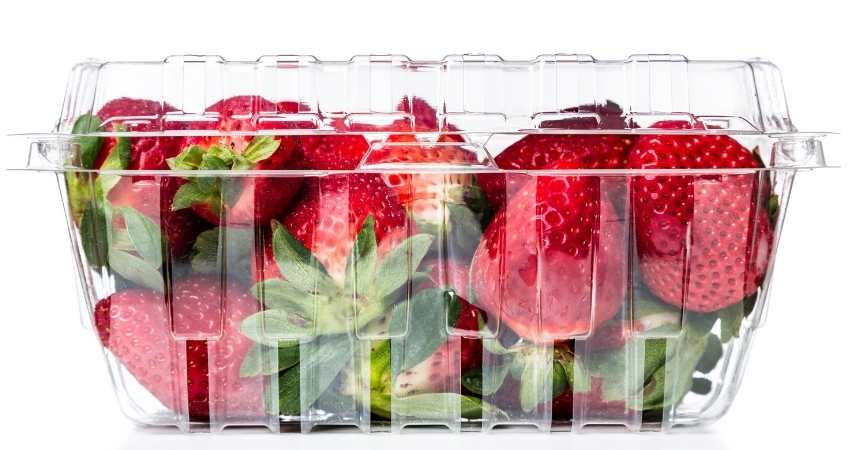This Is How To Store Strawberries For Best Results
Storing strawberries for the best results is essential. Therefore, how to store strawberries?
The best way to store strawberries is by keeping them dry and either cold or frozen. For short-term storage strawberries are kept in the refrigerator and a ventilated container. For long-term storage strawberries are kept in the freezer and a sealed bag.
As a Certified Health Coach I address food and strawberry storage in my sessions. We’ll dive into the best methods for storing strawberries for both short-term and long-term solutions. After that, we’ll discuss some of the expiration timelines each storage method will give your fruit.
The Best Ways To Store Strawberries
There are two ways storing strawberries is successfully achieved both for the short-term and long-term1. We’ll start with short-term strawberry storage, so take a look at the following instructions for the best results.

Disclaimer: Some of links in this article are affiliate links which means I may earn a small commission at no extra cost to you. As an Amazon associate I earn from qualifying purchases.
For Short-term Strawberry Storage
The best method for storing strawberries short-term is to bathe the strawberries in a unique solution. The solution shall be one part vinegar and three parts water.
- Mix 3 parts water and one part vinegar in a large bowl.
- Clean and bathe all strawberries in the vinegar solution. Ensure the entire strawberry is submersed and remove any sand or dirt from the strawberries.
- Carefully pat dry all strawberries with the paper towels. Do not remove any of the tops or greens.
- Line a salad spinner with paper towels. Place the bathed strawberries into the salad spinner and spin-dry.
- Line a polyethylene plastic storage container or a glass storage container with clean, dry paper towels. Place the newly dried strawberries into a storage container lined with paper towels.
- Place the entire container in the fridge and loosely set the lid on top, ensuring airflow can occur.
Pro Refrigerator Tip #1: To maintain the best humidity level in your refrigerator, try keeping an open box of baking soda in the back of the fridge. It helps maintain stable humidity as well as maintaining a healthy air environment by soaking up nasty odors.
#2: A salad spinner is one of those items which will make you wonder how you did with one before you bought it.
Check out some affordable spinners on Amazon, salad spinners.
For Long-Term Strawberry Storage
The best method for storing strawberries long-term ((National Center for Home Food Preservation: Freezing Strawberries)) is by following the bathing method for short-term strawberry storage followed by freezing ((USDA: United States Standards For Grades of Washed and Sorted Strawberries for Freezing)).
- Follow the vinegar and water bathing method detailed for short-term storage.
- Carefully dry the strawberries with paper towels.
- Line a tray with parchment paper and place dried strawberries on paper.
- Flash freeze the tray of strawberries by placing the tray in a freezer for 6 hours uncovered.
- Next, transfer the semi-frozen strawberries to freezer bags.
Have you ever stored strawberries and grapes together, or may be thinking about it? You may be surprised at the answer which you can find out right now in my blog post, Can You Store Strawberries And Grapes Together?

How Do You Keep Strawberries From Going Bad So Fast?
Strawberries have lots of energy. They have an incredible 33kcal (136kj) per 100 g (3.5 oz) of fruit. Having that much energy means they’re not only a great source of energy, they’re also a great source of energy for molds and bacteria.
It’s typical to find these molds growing on strawberries that have gone bad2. So how do you keep strawberries from going bad so fast?
Several factors cause strawberry degeneration: moisture, temperature, bacteria, and air. Control these factors, and you can effectively alter the timeline of the strawberry decaying process.
Using these factors, we can quickly develop a 4-step process for accurately and effectively slowing down the decay process.
- Remove Bacteria
- Control Moisture
- Control Temperature
- Control Airflow
Remove Bacteria
Have you ever bought a basket of strawberries home from the grocery store and made the mistake of biting into one before washing them off? Then likely you’ve experienced chewing on sand.
But it isn’t just sand that you’ll find on strawberries from the supermarket. There’s a whole host of nasty little creatures creeping and crawling around on your fruit that you can’t see: bacteria.
Removing the bacteria from the fruit is essential in slowing down the decay process. You’re not removing them all, but you’ll be able to remove a good percentage of the nasty little creepy-crawlies ((The Old Farmer’s Almanac: Growing Strawberries)).
Using the method outlined above (in the long-term strawberry storage instructions) with vinegar and water solution to clean the strawberries before storage allows for removing the bacteria via the vinegar and water solution.

Control Moisture
Moisture is a requirement for mold growth. Although the strawberry inside may have some juicy, delicious moist fruit, the exterior skin prevents the moisture from escaping the fruit. That is until the cell walls break down enough allowing the moisture to start leaking out.
Keeping your strawberries dry and in a dry environment reduces the potential for mold to grow. Many people think stored strawberries ripen but you may be surprised to find out otherwise. You may want to check out my blog post on the topic, A Guide to Ripening Strawberries.
Control Temperature
It isn’t just the moisture you need to control when trying to store strawberries for optimal results. Controlling the temperature3 an obvious and necessary task in the battle with degenerating fruit.
If you’ve ever seen fruit left out in the sun, then you know it doesn’t take long for that fruit to break down. Naturally, all organic life should break down in the sun when life has completed its cycle. Otherwise, nothing would ever recycle, and we would still have the bodies of dinosaurs lying around.
Well, it’s not just the temperature; it has a lot more to do with the active bacteria in breaking down the organic matter. If you give the little bacteria a nice warm sunny vacation, they will go to town on breaking down the organic matter.
With this in mind, controlling the temperature is essential to preserving the fruit. Lowering the temperature decreases the speed the bacteria could break down your strawberries. And that’s why we have refrigerators and freezers, my friends
Control Airflow
Airflow is the final piece to the puzzle when it comes to proper strawberry storage. There are two opposite methodologies required depending on whether you are choosing to store the strawberries for the short-term or long-term.
For short-term storage, the best idea is to allow for airflow. Allowing low flow in a dry and cool environment will decrease any possible chance for mold growth. Stagnant air is a friend of mold.
For long-term strawberry storage via the freezer, the best results are inspired by a lack of airflow. After following the process detailed earlier, the air in the flash-frozen strawberries freezer bag should be minimal. Vacuum sealing the bag for freezing is the preferred methodology.
If you don’t have a vacuum sealer you may want to look into getting one. It’s one of those items that will make you wonder how you did without one before. Check out some affordable ones on Amazon, vacuum sealers.
How Long Will Strawberries Last In An Airtight Container?
Most of us who purchase strawberries buy much more than we can eat in one sitting. Often a basket of strawberries is quite common to find in a supermarket. But nobody eats an entire basket of strawberries at once. Not without getting sick anyway.
If you’re storing strawberries short-term in an airtight container, strawberries will only last a maximum of three to seven days. If the strawberries are cut, it is likely to be the lower end of that estimate.
Another common container found in the supermarket is plastic, rectangular ones with air vent holes in the top and near the bottom. These containers are fine for short-term storage in the fridge because they allow air flow ((University of California: Strawberries: Safe Methods to Store, Preserve, and Enjoy)).
Sometimes you’ll clean and cut some strawberries but not eat them all and store them in a container. If this is the case, immediate refrigeration is required. Leaving the strawberries out of the fridge after cutting will most definitely inspire mold growth in a short period.
Sometimes when you’ll purchase strawberries and want to keep them in storage for more extended periods. This is especially true in climates where harsh winters are present, and long-term food storage is critical.
When freezing, keeping strawberries in an airtight container is highly recommended. Unlike short-term storage, long-term storage requires an airtight container with the least amount of air possible in the container and the strawberries.
If you have any questions to ask me about this article don’t hesitate to comment below or email us. You can find an email on our contact page.
Read Next – More Food Storage
Should You Refrigerate Balsamic Vinegar?
Pomegranate Ripe? Here’s How To Tell (And A Few Tips)
- Ohio State University Extension: Selecting, Storing, and Serving Ohio Strawberries [↩]
- Wikipedia: Strawberry [↩]
- University of Illinois Extension: Strawberries & More [↩]
